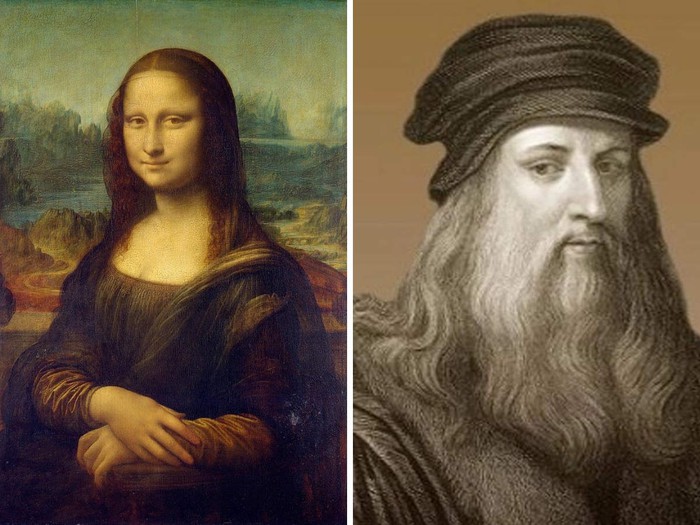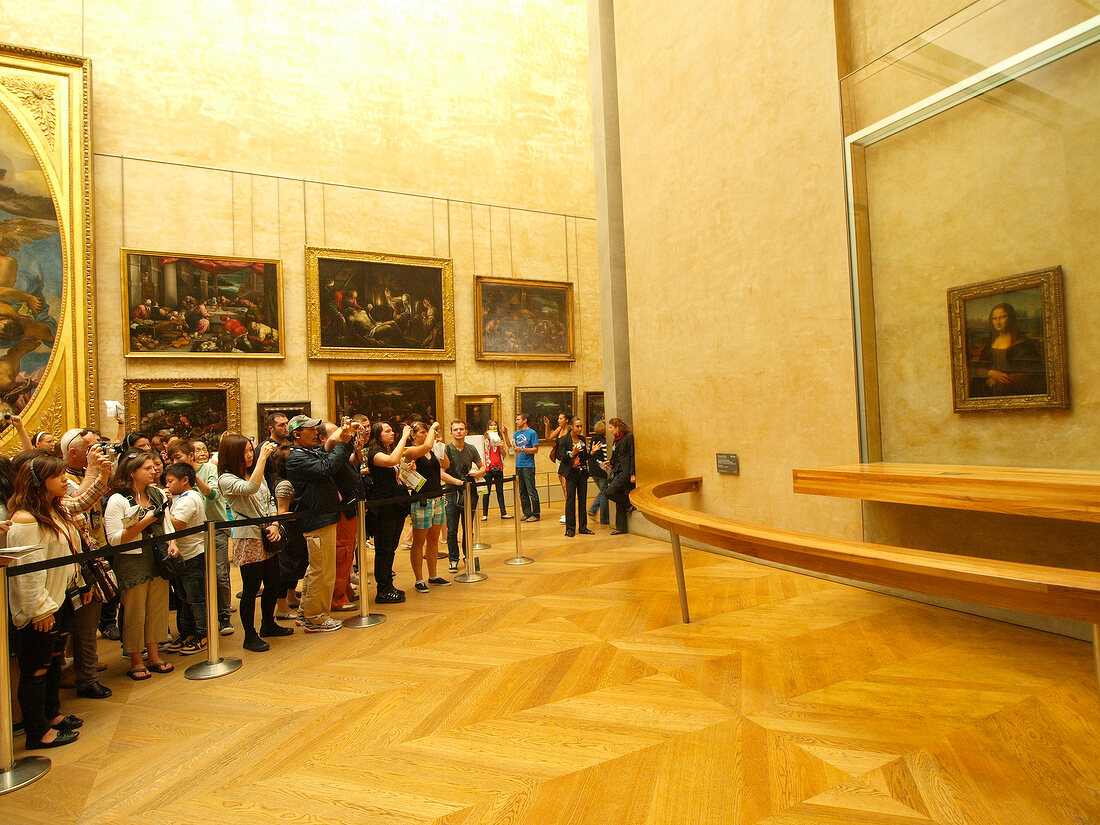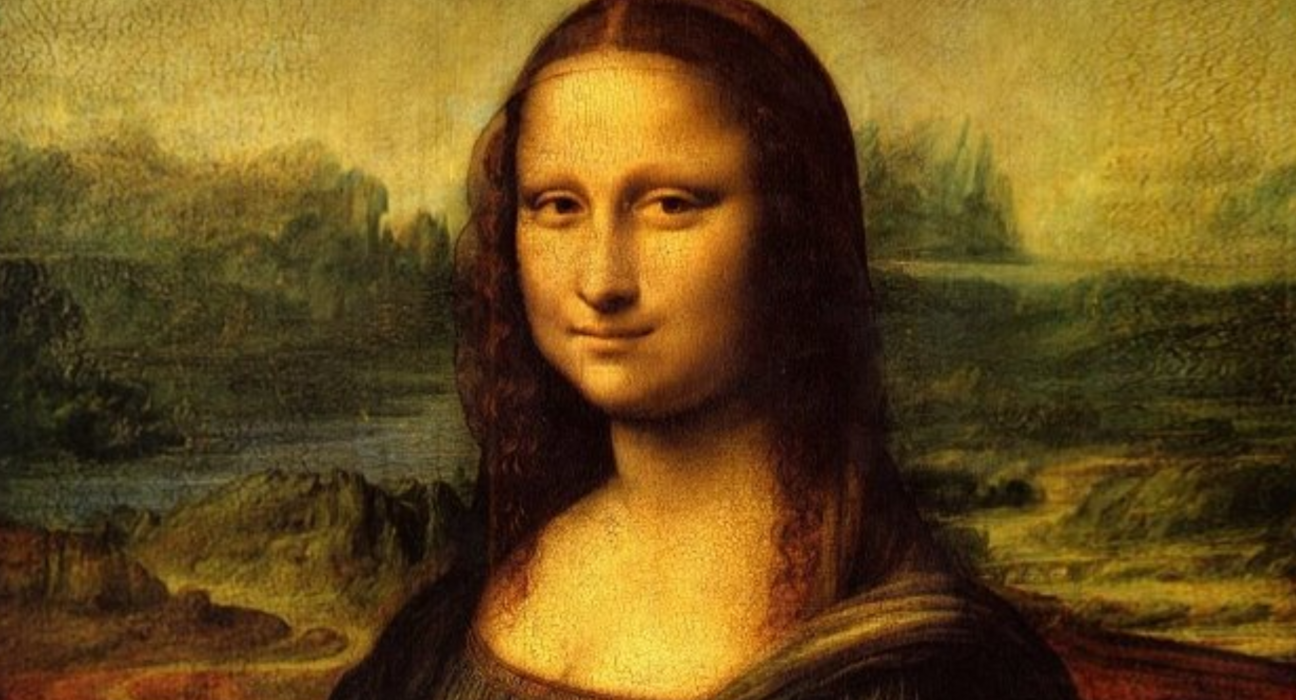The Mona Lisa, arguably the most famous painting in the world, is far more than just a work of art; it is a cultural icon that has captivated the hearts and minds of people for centuries. This masterpiece by Leonardo da Vinci has inspired countless artists, researchers, and art enthusiasts, sparking debates and igniting imaginations across generations. In this article, we will delve deep into the mysteries surrounding the Mona Lisa, exploring its historical context, artistic techniques, and enduring impact on global culture.
The Mysterious Smile: A Window to the Soul
The enigmatic smile of the Mona Lisa has been the subject of intense scrutiny and fascination for centuries. It is perhaps the most defining feature of the painting, drawing viewers in and leaving them pondering its true meaning.
The Technique Behind the Smile

Leonardo da Vinci employed a revolutionary technique known as sfumato to create the illusion of depth and softness in the Mona Lisa’s facial features. This technique involves the subtle blending of colors and tones, creating a smoky or hazy effect that gives the smile its elusive quality.
The artist’s mastery of light and shadow plays a crucial role in the smile’s ambiguity. The corners of the mouth and eyes are deliberately shadowed, making it difficult for viewers to determine the exact expression. This interplay of light and shadow creates a dynamic quality to the smile, seeming to change as the viewer’s perspective shifts.
Psychological Interpretations
Psychologists and art historians have long debated the emotional state portrayed by the Mona Lisa’s smile. Some argue that it represents a state of contentment or inner peace, while others see hints of melancholy or even mischief.
The smile’s ambiguity may be intentional, reflecting da Vinci’s interest in the complexity of human emotions. It could be seen as a representation of the duality of human nature, embodying both joy and sorrow simultaneously.
Cultural Impact of the Smile
The Mona Lisa’s smile has become a cultural phenomenon in its own right. It has been referenced, parodied, and reimagined countless times in popular culture, from advertisements to memes. This widespread recognition speaks to the universal appeal and intrigue of the painting’s central feature.
The smile’s mystery has also inspired scientific studies, with researchers using advanced imaging techniques to analyze the painting and uncover hidden details. These studies have only added to the painting’s allure, demonstrating how art and science can intersect in fascinating ways.
The Renaissance Context: Art Meets Science
The Mona Lisa was created during the height of the Italian Renaissance, a period marked by a flourishing of art, science, and culture. Understanding this historical context is crucial to fully appreciating the painting’s significance.
Leonardo da Vinci: The Renaissance Man

Leonardo da Vinci, the creator of the Mona Lisa, embodied the Renaissance ideal of the polymath or “Renaissance man.” He was not only a painter but also an inventor, anatomist, and engineer. This diverse range of interests and expertise is reflected in the meticulous detail and scientific accuracy of his artwork.
Da Vinci’s notebooks reveal his deep fascination with human anatomy, perspective, and the natural world. These studies directly informed his artistic techniques, allowing him to create incredibly lifelike and emotionally complex portraits like the Mona Lisa.
Artistic Innovations of the Renaissance
The Renaissance period saw significant advances in artistic techniques and philosophy. The concept of linear perspective was developed, allowing artists to create more realistic depictions of three-dimensional space on a two-dimensional surface.
In the Mona Lisa, da Vinci masterfully employs these new techniques. The sitter’s pose, with her body angled but her face turned towards the viewer, was revolutionary for its time. This three-quarter view became a standard in portrait painting, showcasing the subject’s features while maintaining a sense of depth and volume.
The Fusion of Art and Science
The Mona Lisa exemplifies the Renaissance ideal of uniting art and science. Da Vinci’s understanding of optics and human anatomy allowed him to create a portrait that seems alive and breathing. The sfumato technique, which he perfected in this painting, is based on his scientific observations of how light interacts with different surfaces.
The background of the painting, with its winding paths and misty mountains, demonstrates da Vinci’s interest in geology and atmospheric perspective. This attention to naturalistic detail was a hallmark of Renaissance art, reflecting the period’s renewed interest in observing and understanding the natural world.
The Woman Behind the Portrait: Lisa Gherardini
While the Mona Lisa has become an icon in its own right, the true identity of the woman in the portrait remains a topic of debate. Exploring the identity and life of the sitter adds another layer of fascination to this already intriguing artwork.
Unveiling the Identity
For many years, the identity of the woman in the painting was a mystery, adding to its allure. However, most scholars now agree that the subject is Lisa Gherardini, the wife of Francesco del Giocondo, a wealthy silk merchant from Florence.
The painting is sometimes referred to as “La Gioconda,” which can be interpreted as both a reference to her married name and a pun on the Italian word for “joyful” (gioconda), perhaps alluding to her enigmatic expression.
Lisa’s Life and Times
Lisa Gherardini lived during a time of great change in Florence. The city was a center of art, commerce, and political intrigue. As the wife of a successful merchant, Lisa was connected to both the noble and mercantile classes—her family had aristocratic roots, while her husband’s wealth placed them among Florence’s prosperous citizens. During this period, such families increasingly commissioned portraits as a sign of their social status.
Understanding Lisa’s social position and the expectations placed on women of her class can provide valuable insights into the painting. The modest yet elegant clothing and the lack of jewelry in the portrait may reflect the values of restraint and virtue that were prized in Florentine society.
The Commissioning of the Portrait
The circumstances surrounding the creation of the Mona Lisa are not entirely clear. It’s believed that Francesco del Giocondo commissioned the portrait to celebrate the birth of the couple’s second son and the purchase of a new home.
Interestingly, the portrait was never delivered to the Giocondo family. Da Vinci kept the painting with him until his death, continually refining and perfecting it. This personal attachment to the work may explain some of its unique qualities and the level of detail and care evident in every brushstroke.
The Painting’s Journey Through History

The Mona Lisa‘s fame is not solely due to its artistic merits. The painting has had a turbulent and fascinating history that has contributed to its mythical status in the art world.
From Royal Collection to Public Museum
After da Vinci’s death in 1519, the painting entered the French royal collection, likely acquired by King Francis I of France. For centuries, the portrait remained in the private chambers of French monarchs, hidden from public view.
Following the French Revolution, the monarchy’s art collection was declared public property. The Mona Lisa was briefly displayed in Napoleon Bonaparte’s bedroom before being moved to the Louvre, likely around 1797, making it accessible to the public for the first time. It has remained there ever since, becoming one of the museum’s most treasured masterpieces.
The Theft That Shocked the World
In 1911, the Mona Lisa was stolen from the Louvre, creating a media sensation. The painting’s absence lasted for two years, during which time its fame grew exponentially. People flocked to the Louvre to see the empty space where it had hung.
When the painting was recovered in 1913, it had become a global celebrity. The theft and recovery story added a layer of intrigue and adventure to the Mona Lisa’s already compelling narrative, cementing its place in popular culture.
World Tours and Diplomatic Missions
In the 20th century, the Mona Lisa embarked on several high-profile international tours. These exhibitions introduced the painting to millions of people who would never have had the chance to see it otherwise, further expanding its global influence.
The painting has also been used as a tool of cultural diplomacy. Its loan to museums in the United States and Japan in the 1960s and 1970s helped strengthen international relations and promote cultural exchange.
The Mona Lisa in Popular Culture

The influence of the Mona Lisa extends far beyond the walls of museums, permeating various aspects of popular culture and modern art.
Artistic Reinterpretations
Many artists have created their own versions of the Mona Lisa, either as homage or parody. Marcel Duchamp’s “L.H.O.O.Q.,” which features a mustachioed Mona Lisa, is one of the most famous examples, challenging traditional notions of art and beauty.
Andy Warhol’s silk-screen prints of the Mona Lisa turned the painting into a mass-produced icon, commenting on the commercialization of art and the nature of celebrity in the modern age.
In Literature and Film
The Mona Lisa has inspired countless works of literature, from poems to novels. Dan Brown’s bestselling thriller “The Da Vinci Code” brought renewed attention to the painting, weaving an intricate conspiracy theory around its creation and meaning.
In film, the Mona Lisa has made numerous appearances, often as a symbol of high culture or as the target of elaborate heists. These references in popular media have helped maintain the painting’s relevance in contemporary culture.
Advertising and Branding
The image of the Mona Lisa has been used extensively in advertising campaigns, often to convey ideas of quality, luxury, or timeless beauty. Its widespread recognition makes it a powerful visual shorthand in marketing.
The painting has also become a popular subject for merchandise, from t-shirts to mugs. This commercialization has been criticized by some as trivializing great art, while others see it as a way of making art more accessible to the masses.
Conclusion: The Eternal Allure of the Mona Lisa
:focal(1816x1366:1817x1367)/https://tf-cmsv2-smithsonianmag-media.s3.amazonaws.com/filer_public/90/25/9025858e-28e7-432b-94ac-b4c1f625429c/gettyimages-1220879035.jpeg)
The Mona Lisa stands as a testament to the enduring power of art to captivate, inspire, and provoke thought across centuries and cultures. Its significance extends far beyond its undeniable artistic merits, encompassing historical, cultural, and even scientific dimensions.
From the enigmatic smile that continues to intrigue viewers to the revolutionary techniques employed in its creation, the Mona Lisa remains a subject of endless fascination. Its journey through history, from a private commission to a global icon, reflects the changing relationship between art and society.
As we continue to study and admire the Mona Lisa, we are not just looking at a painting, but engaging with a piece of human history. It challenges us to contemplate the nature of beauty, the power of artistic expression, and our own place in the grand tapestry of human culture.
In the end, perhaps the true magic of the Mona Lisa lies not in solving its mysteries, but in the way it continues to inspire wonder and spark the imagination of each new generation that encounters it. It remains, as it has for centuries, a window into the depth and complexity of the human experience.
✉️ Stay Connected — Subscribe for Weekly Updates
Discover timeless stories, practical wisdom, and beautiful culture — delivered straight to your inbox.
*We only share valuable insights — no spam, ever.






